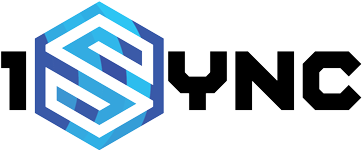A New Frontier
Virtual Reality offers advantages that extend well beyond mere entertainment. Since 2014, our VR solutions have been utilized in a number of medical applications, and certified by the Helsinki Ethics Committee at the Kaplan Hospital. Our VR solutions are applicable to the following classes of medical applications:
High-Risk Pregnancy
Our Out-of-Body VR technology is currently used at the Kaplan Hospital for the treatment and care of high-risk pregnant women. Our VR experiences allow the patient to be distracted from their high-pressure environment.
This in turn helps them achieve a state of mind that is more conducive to a healthy pregnancy. Patients consistently report feeling less stressed, calmer and less anxious.
By comforting and calming the patient in this manner, medical professionals are able to obtain true readings from the patient and the baby, including blood pressure, heart rates and blood saturation. These baseline readings are therefore achieved without the influence of transient effects of stress or anxiety.
Assistance With External Cephalic Version (ECV)
The ECV is a procedure carried out to avoid high-risk breech birth, where a baby is born head-first instead of buttocks-first.
Our VR technology is used to calm the patient during the ECV to avoid muscular tension, high-tonus and uterus contraction during the procedure.
Patients consistently report feeling calmer and less conscious of the stress-inducing surgical procedure as a result of our technology.
Short-Term Pediatric Procedures
Our VR solutions can be used to distract and calm children during short-term procedures so as to minimize emotional response and resistance.
This includes procedures such as limb salvage, limb lengthening and blood transfusion.
It can also be used in the practice of counselling and the treatment of depression.
Assistance for Needle-Phobic Patients
Injections and other invasive treatments may be highly anxiety-inducing for needle-phobic patients.
By distracting such patients with our Out-of-Body VR experiences, the brain’s instinctive flight response can be avoided.
Thus, such procedures may be performed with minimal resistance.
What Our Clients Have To Say
In a joint project we did with 1SYNC, we developed unique software based on virtual reality glasses that simulate different environments with compatible music.
The content itself has been prepared based on previous research in the area of analgesia and exposure to sedative content.
The content is used by us for research in a number of areas of high-risk pregnant women and it is evident that there is a positive impact on the objective metrics and also it seems to have an impact on specific research areas whose results will be published at the end of the study.
The use of the software has also shown an upward trend in the success rate of performing short procedures in a primary group of patients and we are now increasing the number of subjects.
The research team has been working on this research for over a year and believes that virtual reality and its contents bring positive results that will be applied later in regular treatments.
The content itself has been prepared based on previous research in the area of analgesia and exposure to sedative content.
The content is used by us for research in a number of areas of high-risk pregnant women and it is evident that there is a positive impact on the objective metrics and also it seems to have an impact on specific research areas whose results will be published at the end of the study.
The use of the software has also shown an upward trend in the success rate of performing short procedures in a primary group of patients and we are now increasing the number of subjects.
The research team has been working on this research for over a year and believes that virtual reality and its contents bring positive results that will be applied later in regular treatments.

